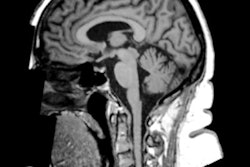
Eating a walnut a day may not keep the doctor away, but researchers at Beth Israel Deaconess Medical Center (BIDMC) see on functional MR images (fMRI) how consuming the tasty morsel activates brain regions associated with regulating hunger and cravings, according to a study published online August 17 in Diabetes, Obesity and Metabolism.
Led by Dr. Christos Mantzoros, director of the Human Nutrition Unit at BIDMC, the researchers recruited 10 obese volunteers to live in the facility's clinical research center for two five-day sessions. The controlled environment was designed to accurately monitor the subjects' nutritional intake.
Over the two sessions, the participants randomly consumed smoothies containing 48 grams of walnuts or a walnut-free, but nutritionally comparable, placebo smoothie flavored to taste exactly like the walnut drink. The subjects later reported feeling less hungry during the week they consumed smoothies with the real walnuts versus the placebo smoothies.
On the fifth day, the subjects underwent fMRI scans, which revealed increased activity in the right insula region of the brain when they drank the real walnut smoothie compared with the fake drink. The insula is associated with cognitive control and salience, which would indicate that the smoothie consumers were paying more attention to food choices and selecting the less desirable or healthier options over the highly desirable or less healthy options.
Up next, Mantzoros and colleagues plan to see whether eating more nuts will trigger more brain activation or if the effect plateaus after a certain amount.
The researchers received support for the study from several sources, including the California Walnut Commission.


.fFmgij6Hin.png?auto=compress%2Cformat&fit=crop&h=100&q=70&w=100)





.fFmgij6Hin.png?auto=compress%2Cformat&fit=crop&h=167&q=70&w=250)











